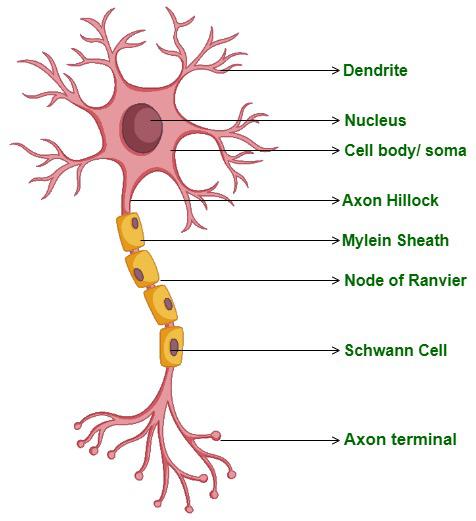Why Relaxation Alone is Not Enough To Rewire the Nervous System
Relaxation techniques are wonderful, useful, and vitally important for inner healing. But when you only use them preventatively, they’re not enough to rewire the nervous system and get to the root issue.
For that, you have to go deeper.
Here’s what you’ll learn in this article:
- Signs you might benefit from working with your nervous system
- How to tell if you’re dealing with trauma
- How trauma and stress habits get “wired” and activated in the nervous system
- What is nervous system regulation?
- Why relaxation is not the same thing as rewiring the nervous system
- How to rewire the nervous system for less stress and anxiety
Signs You Might Benefit From Working with Your Nervous System
This article is for anyone who wants to start showing up for life more lovingly.
If you’re wondering if the stressful events in your life are traumatic “enough” to justify your seeking this information, I assure you they are, and you’re in the right place.
Because while most people think of of horrific events like war and abuse when they hear the word “trauma”, the truth is that we all carry some degree of trauma in us, simply by living in an imperfect society full of imperfect humans.
“Trauma isn’t what happens to you. It’s what happens inside you as a result of what happens to you.” -Gabor Maté
Whenever your needs aren’t met, and you don’t have the capacity or opportunity to fulfill those needs yourself, trauma is the result.
Being scolded by a parent, the death of a pet, feeling unseen, unloved, or misunderstood are all examples trauma that can affect your feelings, behaviors, and beliefs, even if they aren’t big cataclysmic events. (1)
If you ever find yourself overreacting, feeling emotionally numb, completely overwhelmed, or like you’re on autopilot and can’t show up for life the way you want to, those are all clear signs that there is some unprocessed trauma in your nervous system.
Related: How to Release Trauma Trapped in Your Nervous System
While you can’t change what happens to you, you can heal.
This means taking responsibility for your reactions and do the inner work you need to do in order to create a healthier relationship with yourself, your response to stress, your relationships, and life as a whole.
Relaxation techniques are a key part of this inner work, and regularly using relaxation techniques can help you reduce the occurrence of stress.
But healing doesn’t happen at the root level until you’re able to choose a new response when you’re in the middle of a stress-storm.
And in order to do that, it’s helpful to understand how stress and trauma get activated in your nervous system in the first place.
How Trauma and Stress Habits Get “Wired” —and Activated— in the Nervous System
Anytime you encounter a stressful situation that you can’t escape or safely process afterwards, that stress gets stored in your nervous system as a stress pattern (aka trauma).
This is a mechanism that is intended to protect you, so you can get out of dangerous situations more quickly in the future.

From that initial stressful moment forward, your nervous system becomes more sensitive to similar stimuli and situations, turning on your sympathetic nervous system (SNS) whenever it perceives an analogous threat—whether you’re actually in physical danger or not.
Your SNS in charge of activating a physiological stress response, which puts you in “survival mode,” increasing oxygenation to your muscles and stalling functions like digestion and sleep, until your body perceives that the threat has passed.
The issue is, when a stressful event is particularly extreme, shocking, or persistent, your nervous system becomes hyper-sensitive and turns on your stress response, even when you are actually safe.
Why does this happen?
The autonomic nervous system includes three branches: the sympathetic (fight-or-flight), parasympathetic (rest-and-digest), and enteric (gastrointestinal) nervous systems.
These 3 branches are in charge of promoting survival, and that’s a really big job.
In order to save energy and be able to function, the nervous system has to create shortcuts wherever it can, and it does this by strengthening neural connections that are deemed to be most useful.
What is Nervous System Regulation?
Nervous system regulation is the ability to modify your stress response instead of being overwhelmed by it.
While the autonomic nervous system (ANS) generally functions automatically, what you can do is regulate your stress response when you notice that it’s been activated. Over time and with some dedicated practice as well as support, you can also rewire your nervous system and change its sensitivity to specific stimuli so it no longer gets activated so easily.
To do this, you have to work with the vagus nerve.
The vagus nerve is the longest nerve in the ANS, spanning from the brain down through the throat, neck, and torso, all the way to your digestive tract and back.
What’s particularly interesting about the vagus nerve is that the majority of its nerve-fibers are afferent, meaning they send messages from the body to the brain (4).
So when you consciously choose to calm your body by deepening your breath, slowing your heart-rate, relaxing your muscles, and so on, your brain receives the signal that its safe to shut down the stress response.
If you look at the anatomy of a neuron you’re going to see the main cell body, with numerous root-like protrusions coming off of it called dendrites. You’ll also notice a long tail extending from the cell-body, called an axon, which has similar root-like protrusions coming off of it at the end.
These “roots” are how each neuron connects with other neurons in order to send messages—in the form of electrical impulses—through the nervous system. And these messages are what enable your body to function.

Whenever you think a thought, move your body, or respond to your environment, you are either strengthening the neural connections that are already established, or you’re creating new ones.
It takes a lot less energy to strengthen what’s already there, which is why it can be so challenging to change old habits, but it’s not impossible.
The more you practice a new response, the stronger that neural pathway becomes, and the easier it is to respond in a similar way moving forward.
Why Relaxation is Not the Same Thing as Rewiring the Nervous System
The more you practice relaxation techniques, the easier they are to implement when you most need them and the easier it becomes for your nervous system to heal and regulate.

But, again, the essential aspect of this healing is that you start using these techniques when you’re in the midst of a heightened stress response, because it’s only when you start choosing a new reaction to old patterns that new, healthier patterns can be established.
And because of the structure of the vagus nerve, you can choose new reactions by changing what you do with your body.
How to Rewire the Nervous System for Less Stress and Anxiety
Stress is an inevitable and necessary part of life, and anxiety is a response to stress.
Anxiety happens when you feel alarm in your body from an activated stress response, and your mind desperately searches for ways to bring you back to safety.
The issue is that the stress you feel often has very little to do with what’s happening in the present moment.
You have a stress pattern/trauma embedded in your nervous system from the past, and instead of seeing the situation in front of you clearly, you’re simultaneously feeling the fear you felt in the past and seeing flashes of possible situations in the future that could make you feel the same way.

But your mind can’t find solutions that it cannot see.
You need to be able to see clearly in order to respond to the moment that you’re in appropriately.
In order to see more clearly, you have to change the way you respond when you feel stressed.
This takes insight, diligent practice, compassionate support, and time.
My online course, Healing Through Anxiety, gives you a toolbox of powerful holistic strategies to help you heal the root causes of stress and anxiety.
I can’t wait to see where it takes you!





